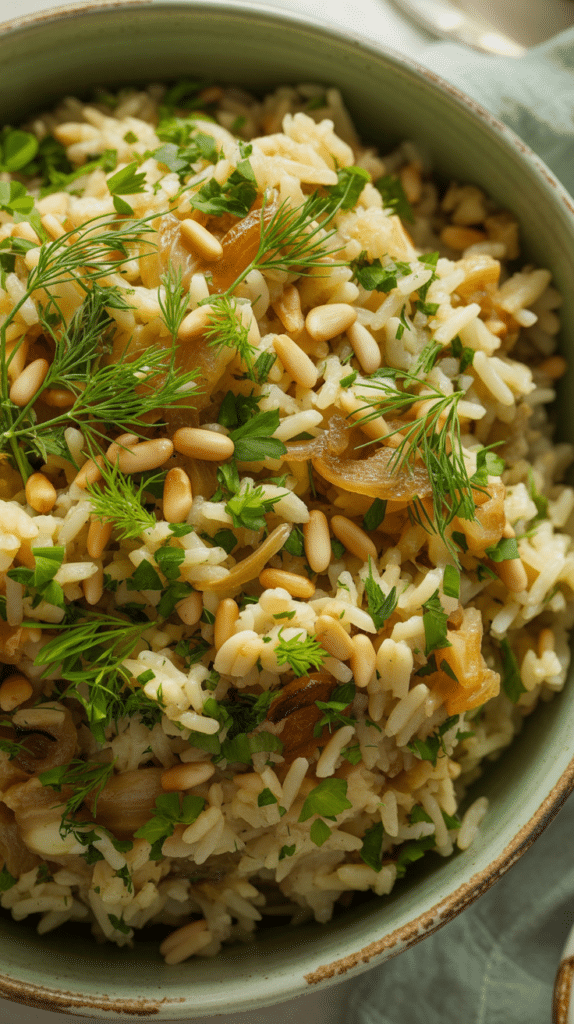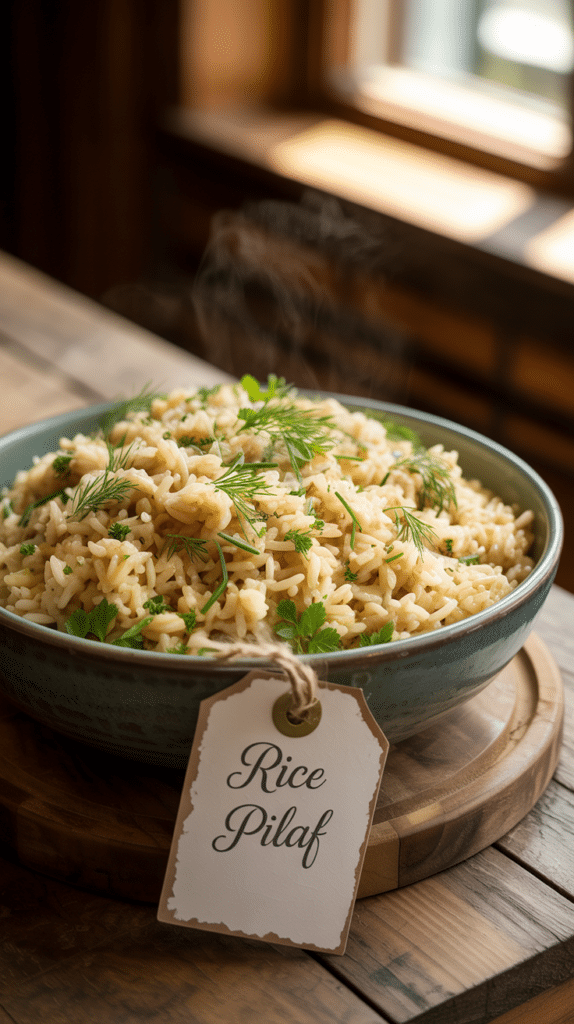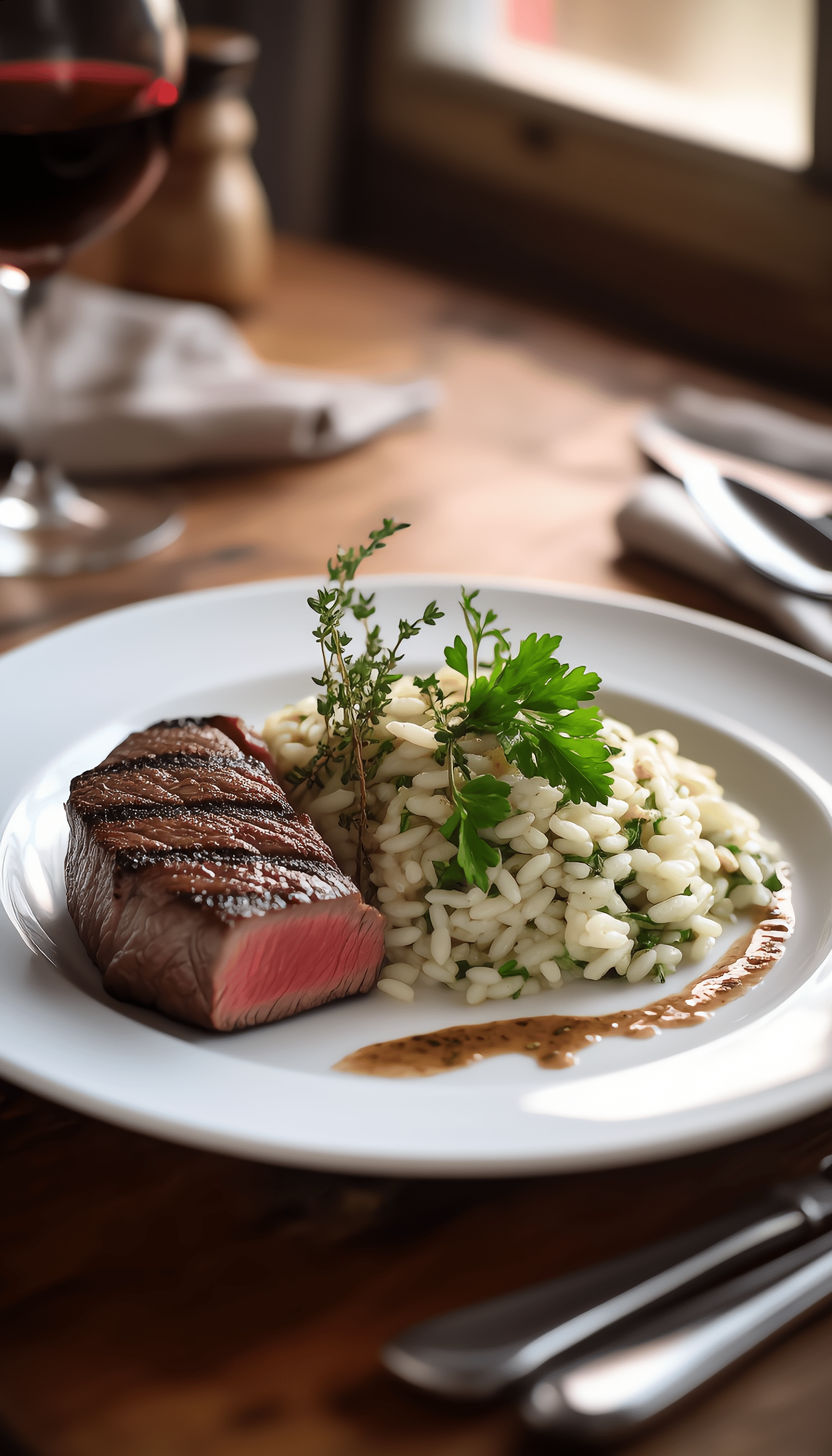Physical Address
304 North Cardinal St.
Dorchester Center, MA 02124
Physical Address
304 North Cardinal St.
Dorchester Center, MA 02124

lovingmyhomeblog.com contains affiliate links and is a member of the Amazon LLC Associates Program. If you make a purchase using one of these Amazon links, I may receive a commission at no extra cost to you. See my Privacy Policy for more information.
Have you ever wondered how to elevate plain rice into something extraordinary? A perfectly executed herbed rice pilaf can transform an ordinary dinner into a memorable culinary experience.
This versatile side dish combines aromatic herbs, savory broth, and perfectly cooked rice to create a flavorful accompaniment that complements nearly any main course. 🍚✨
In this comprehensive guide, we’ll explore everything you need to know about creating a delicious herbed rice pilaf that will impress your family and dinner guests alike. From selecting the right ingredients to mastering cooking techniques, you’ll soon be preparing restaurant-quality pilaf in your own kitchen.

Before diving into our recipe, let’s understand what makes rice pilaf different from regular rice. Unlike plain boiled rice, pilaf involves sautéing the rice grains in butter or oil before adding liquid, which gives the dish its distinctive fluffy texture and nutty flavor. This cooking method originated in the Middle East but has been adapted by cuisines worldwide.
“The secret to perfect rice pilaf lies in the initial toasting of the grains, which creates depth of flavor that can’t be achieved by simply boiling rice.”
Rice pilaf typically includes aromatics like onions and garlic, and often incorporates herbs, spices, and sometimes nuts or dried fruits. Our herbed version focuses on fresh herbs to create a bright, fragrant side dish that pairs beautifully with savory main courses like steak.
The beauty of herbed rice pilaf lies in its simplicity. You’ll need:
The foundation of any good pilaf is the rice itself. Here’s a comparison of rice varieties commonly used for pilaf:
Basmati rice is often considered the gold standard for pilaf, as its grains remain separate and fluffy when cooked properly.
Now that we understand the basics, let’s dive into our perfect herbed rice pilaf recipe!
Adjust ingredients for your desired serving size and preferences

Creating the perfect herbed rice pilaf is both an art and a science. Here are some pro tips to ensure success:
Rinsing rice before cooking removes excess starch, which helps prevent clumping and results in fluffier pilaf. Place your rice in a fine-mesh strainer and rinse under cold water until the water runs clear.
Choose a heavy-bottomed pot with a tight-fitting lid to ensure even heat distribution and to trap steam properly during cooking. If your lid doesn't seal well, place a clean kitchen towel between the pot and lid to create a better seal.
The general rule is 2 parts liquid to 1 part rice, but this can vary slightly depending on the rice variety. For basmati rice, a 1.75:1 ratio sometimes works better for pilaf.
Add heartier herbs like rosemary or thyme earlier in the cooking process, but save delicate herbs like parsley, chives, and cilantro for after cooking to preserve their bright flavors and colors.
Don't skip the resting period! Those 5-10 minutes allow the moisture to distribute evenly throughout the rice, resulting in perfectly cooked grains.
Once you've mastered the basic herbed rice pilaf recipe, consider these delicious variations:
Add ½ cup toasted pine nuts, ¼ cup dried currants, and a pinch of cinnamon along with the herbs. This pairs beautifully with Mediterranean-inspired main dishes or can stand alone as a vegetarian entrée.
Sauté 8 ounces of sliced mushrooms with the onions until golden brown. Add ½ teaspoon dried thyme and finish with fresh parsley. This earthy variation complements steak dishes perfectly.
Add the zest of one orange or lemon along with the herbs at the end of cooking. The bright citrus notes make this version excellent with fish or chicken dishes.
Add ½ cup each of diced carrots and celery with the onions. Fold in ½ cup of frozen peas during the resting period to warm through. The colorful vegetables make this a complete side dish that pairs wonderfully with honey glazed carrots for a cohesive meal.

Herbed rice pilaf is incredibly versatile and pairs well with almost any main dish. Here are some perfect pairings:
For an elegant dinner party, serve your herbed rice pilaf in a decorative bowl garnished with additional fresh herbs and a drizzle of high-quality olive oil.
Herbed rice pilaf can be prepared in advance, making it perfect for meal prep or entertaining:
Even experienced cooks sometimes encounter issues with rice pilaf. Here's how to fix common problems:
If your rice is still firm after the cooking time, add an additional ¼ cup of hot broth or water, cover, and cook for another 5 minutes.
If your pilaf turns out too soft or mushy, you likely used too much liquid or cooked it too long. Next time, reduce the liquid slightly or check for doneness earlier.
A slightly crispy bottom layer (called socarrat in Spanish cuisine) can be delicious, but if it's burnt, immediately transfer the rice to a new pot, being careful not to scrape up the burnt bits.
If your pilaf lacks flavor, it could be due to under-seasoned broth. Try adding a bouillon cube or more salt, and don't skimp on the fresh herbs.
Adjust ingredients for your desired serving size and preferences